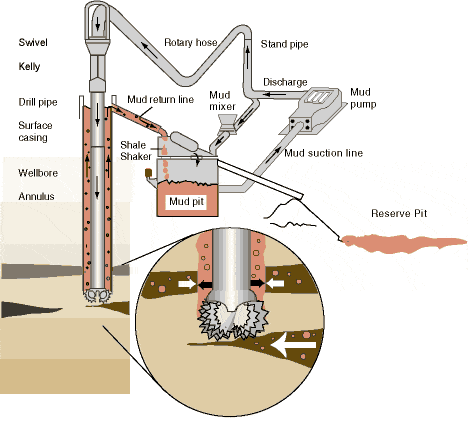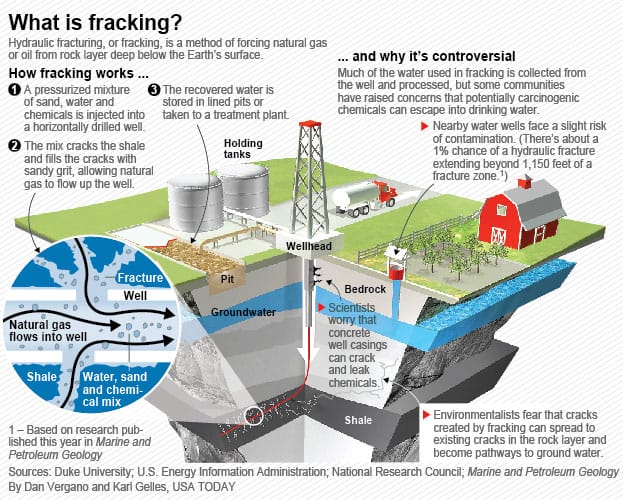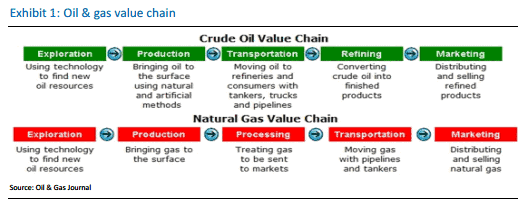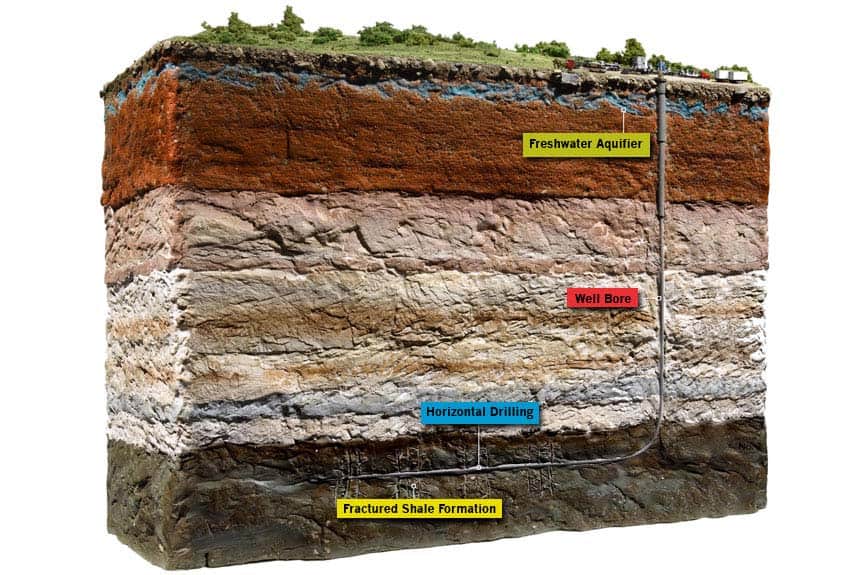Fuel Source
Ever wonder how we get our gas or the differences of the gas you put in your car compared to the gas that heats your water at home?
First off, we need to look at crude oil. Crude oil is a dark, sticky liquid that cannot be used without changing its form. It is found beneath the earth and drilled heavily to become accessible, then a well is made to transfer the gas and oil located deep down.

Once it is brought to the surface, the first part of refining the oil is to heat it until it boils. From there, the liquid is boiled between 80-350 degrees Celsius (176-662 degrees Fahrenheit) and separated into different liquids and gases; gasoline, kerosene, diesel fuel, lubricating oil, tar etc. which is then used for vehicles, chemicals, jets, heavy machinery, wax, power stations and even our roads.

Natural gas is found close by crude oil, deep below the Earth’s surface. Like crude oil, it is a fossil fuel too and there is no telling how long ago they were created, one theory is they were both created millions of years ago when plants and sea animals were buried by rock and sand. The layers of mud, sand, rock, plant, and animal matter continued to build up until the pressure and heat turned them into oil and gas. Both have similar uses but may differ in the effect and outcome of their use. A form of fracking is used to bring both to the surface

Crude oil and natural gas both consist of hydrocarbons, meaning they are both made of hydrogen and carbon atoms. The difference is natural gas has much less atoms which means it always stays in gas form under regular temperatures and pressures, while crude oil has much more, so it mostly stays in liquid form, besides the gases that escape the boiling process. Needless to say, that makes natural gas much lighter, even lighter than air.

Fueling the World: Understanding Natural Gas, Crude Oil, and Their Expanding Role in Energy
Natural gas and crude oil are two of the most essential energy sources in the modern world. Though both are non-renewable fossil fuels, they power homes, vehicles, and industries globally, each with distinct advantages and challenges.
Natural Gas: Cleaner but Complex
Natural gas consists mostly of methane (CH₄) and is considered one of the cleanest-burning fossil fuels. From a carbon emissions standpoint, it produces significantly less carbon dioxide (CO₂) than gasoline or coal, making it a more environmentally friendly option. It’s often compressed into Compressed Natural Gas (CNG) for easier storage and transport, but this process requires substantial energy. As a result, natural gas must be stored in much larger tanks than gasoline, limiting its practicality in most passenger vehicles.
Despite its drawbacks for automotive use, natural gas plays a vital role in electricity generation, industrial processes, and residential heating. Once extracted from underground reservoirs via drilled wells, it’s transported through an expansive pipeline network. Large mains deliver gas to power plants, factories, and urban areas, while smaller distribution lines carry it into homes. In residences, it fuels furnaces, water heaters, dryers, and stoves. Meters track usage, and consumers are billed accordingly—similar to how electricity is monitored.
Beyond energy, natural gas serves as a chemical feedstock in the production of plastics, glass, fertilizers, and even paint. Its byproduct, ammonia, is critical for agriculture, aiding plant growth and improving crop yield.
Historically, natural gas usage dates back to ancient China (500–1000 BC), where bamboo pipelines carried seeping gas to boil saltwater. The first recorded industrial extraction occurred in New York in 1825. Today, experts estimate that remaining recoverable reserves of natural gas could last up to 250 years, though this timeline shortens as global demand rises.
Crude Oil: Versatile and Widely Demanded
Crude oil, the foundation of gasoline and diesel, remains a highly versatile fuel source. Though it emits more carbon than natural gas, it is cheaper and denser in energy per volume—making it the dominant fuel in transportation.
Beyond powering cars, planes, and trucks, crude oil is the raw material for Liquefied Petroleum Gas (LPG), which is commonly used for cooking and heating in urban homes via citywide gas pipeline systems. Crude oil also plays a key role in producing women’s cosmetics, rubber, asphalt, and a wide range of plastic-based materials, making it vital not just to the energy sector but to manufacturing and consumer goods as well.
Environmental Impact and Energy Future
Both natural gas and crude oil offer benefits but also raise concerns about long-term sustainability. One major issue tied to extraction is ground subsidence. When oil or gas is removed from underground reservoirs, the decrease in pressure can cause the land above to sink. This subsidence can damage ecosystems, sewer systems, foundations, and even create sinkholes—dangerous collapses of the earth’s surface that threaten both natural and human-built environments.
To mitigate these effects and reduce carbon emissions, modern energy strategies increasingly favor combined cycle power plants using natural gas. These plants pair gas turbines with steam turbines to extract more energy from the same fuel, making them the cleanest hydrocarbon-based power systems available. Natural gas also complements renewable energy sources like solar and wind by serving as a backup for peak-load power and stabilizing the electrical grid.
Conclusion
Natural gas and crude oil remain central to the global energy equation. While natural gas offers a cleaner burn and diverse applications, crude oil continues to dominate due to its cost-efficiency and versatility. As energy technology evolves and environmental challenges grow more urgent, the future of these fuels will depend on innovation, regulation, and how wisely we manage what remains underground.

Want to learn about other utilities?
Read about sources of tap water, the water cycle and how we harvest it here; Water Source
Learn the origins of electricity
